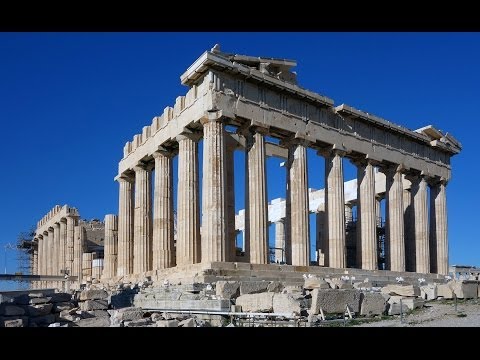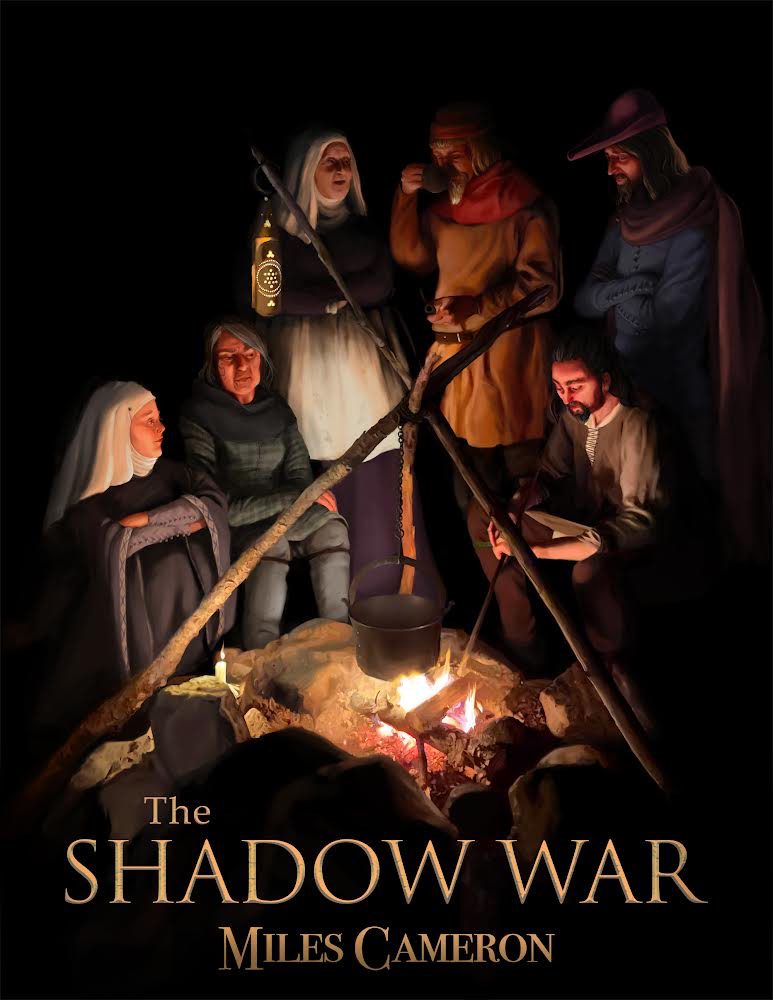Last weekend, I went to the Adirondacks to visit my dad. His cabin is one of the most comfortable places in the world, despite the lack of running water and electricity, or perhaps because of it. There’s no internet, and there’s time to read. I took Froissart, a very long, very tangled, and sometimes downright falsified Chronicle of the world of the later fourteenth century.
I first read Froissart in the Adirondacks, around campfires, when I was fourteen. that same summer I also read James Fenimore Cooper‘s ‘Last of the Mohicans’ and then, like any Harry Potter fan, I gobbled my way though all the Leather Stocking tales, and then read ‘The Spy‘ and … on and on. Froissart and Cooper. I’m pretty sure, somewhere in my neural pathways, you can deconstruct the Red Knight in those campfire readings; I can only say that despite Cooper’s racism, sexism, and florid, overly-descriptive pace, his books were full of wonders — almost as good as Tolkien — and they were the perfect thing to read, propped on your elbows by a camp fire. And so was Froissart.
Can you influence a book by where you read it?
Froissart is not supposed to be fiction. On the surface, Froissart wrote a chronicle of his times, a strict narrative history of the causes and consequences of the ‘Guerre de Cent Ans.’ It is a remarkable document, not least of which because it contains so many patent falsehoods and dramatic creations and downright lies; even more remarkable, as the writer was himself an eyewitness, at times even a player, and he knew… knew directly… the great men and women of his day.
It’s a damn confusing read. And that’s really what this blog is about.
Ah! Digression #2. Where have I been? Well, I’ve written almost three full books so far this year; the Green Count, which is Chivalry III; Rage of Ares, which is Long War 6; almost 55K words for the ‘Song of War’ Trojan War team up (with Simon Turney and Russ Whitfield and five other great writers) and four new Tom Swan episodes. Honestly? When I write that much every day, six days a week and sometimes seven, I’m curiously uninterested in writing a blog.
Anyway.
What makes research complicated is exemplified by reading Froissart. If you are a professional historian, you may wince now, or stop reading, but here’s the thing… there are really shockingly few facts to history. That does NOT mean there is no truth. It simply means that arriving at the truth is not easy. I could spin you a whole bunch of allegories, but let’s stick with Froissart.
I happen to have the ‘Thomas Johnes’ 1805 edition of Froissart in English. because I’m sort of serious about this period, I also have the ‘Lettenhove‘ 1869 edition in the original Medieval French. I can read Medieval French if I’m careful and have a computer and good glasses; I read English a lot more quickly, so I tend to read Johnes’ translation and then look up things that seem dead wrong, unlikely, or useful for reenacting or my novels; then I look in the original French.
So the first note I have to make on research, and the fascination I have with the whole process, is the sheer quality of Johnes research. It doesn’t have to be Johnes; he cribbed notes from other authors; merely that in 1805, well-educated folk had already cross-correlated Froissart with Villani‘s Florentine chronicle, for example. This with only manuscripts to work from, no translation, no computers, and, in fact, without even 3×5 ‘index’ cards.
Can we all just think about that for a moment? If you wanted to check up on what Villani thought John Hawkwood was doing, you might, in 1798, have had a devil of a time finding a copy of Villani in England, and let me add that there’s still not a good reliable translation of the whole, so you’d also have to know Italian, a language that still eludes a lot of modern Medieval scholars. Ok, I admit I’m beating the dead horse. But they did some awesome research back then. They traveled, they read in foreign languages, fighting bandits and probably drinking good wine. Research as an adventure…
Lettenhove, for example, is thoroughly indexed; so much so that a day after I discovered that William Gold, hero of my Chivalry books, existed, I also knew where to find every single reference to his life in Froissart. Oh… did I forget to mention that William Gold occurs in Froissart?
He does. Four times. And this brings me to the second of my many points about research (or is this the third) which is that most people call it ‘research’ when they read a modern secondary source. I’d just like to note that ‘research’ is a spectrum. For me, at one end of the spectrum is direct contact with the past; walking the battlefield of Plataea MYSELF, or handling a late 14th century mercenary contract and trying to read it. At the other end, the easy end, is reading some magisterial secondary source, like William Cafferro‘s biography of John Hawkwood. That’s easy. Really, really easy.
Because, for example, when he refers to William Gold, he calls the man ‘William Gold.’
Whereas in even a transliteration of a period document, his name is Guglielmo Cogno, or possibly Guglielmo Inglese, or maybe William Cook, William the Cook, Guglielmo Gott, Cocco Inglese…
And then, in a manuscript, like this condotta, or military contract, his name looks like this…

I’m sure you found it right away.
Uh-huh….
Listen, I’m not good at reading period documents. My undergraduate professor and still my mentor on all things Medieval, Professor Richard Kaeuper at University of Rochester, called these documents ‘the skin you love to touch.’ And I do. It’s not because they are easy to read, and it is ALMOST NEVER because I’m learning anything that people don’t already know. In fact, in almost every situation, reading an original document is very like that time in High School when you duplicated a famous chemistry experiment. You may learn something, but you seldom learn anything new.
I’ll tell you a secret; it’s the key to understanding Froissart in the Adirondacks, and to understanding why Froissart is a great source and a terrible liar at the same time.
Original documents are gateways.
They prove that the past is real, that history happened, that William Gold, whatever they called him, was, in fact, a professional soldier and knight. Like monuments, Hadrian’s Wall, the Parthenon, and the Great Wall, they allow us a glimpse of the past; a concrete, tangible connection. Certainly, they can be falsified. Or altered.

In fact, if you look at this image of the Parthenon, you’ll see some new stone; they are, in fact, repairing this superb monument. Are the repairs ‘accurate?’ (Yes). But not the same as the old stone, somehow… a different colour, and a different feel… but the whole remains, forever… the Parthenon. (Maybe my favorite historical site; maybe Hadrian’s Wall. Can’t choose.)
Or take the Aeropagus. Socrates walked up these steps, and so did Aristides and the Apostle Paul. Miltiades, Themistokles, Arimnestos…

If that doesn’t move you, nothing I have to say will. Miltiades climbed these steps. And yet… maybe those molecules are worn away.
Or not…
Froissart was there. He’s like the steps of the Aeropagus; he’s a gateway into the reality of the 100 Year’s War, and his lies, distortions, and mythologies are themselves evidence. He lived the glory and horror of a terrible war and he tried to make sense of it, and the sense he made is (literally) an Arthurian Romance studded with senseless violence, rape, and occasional acts of chivalry. You might be surprised about what he tells the truth about… he never sugar coats the horror; when women and children are slaughtered, he tells you. It’s the sheer greed and ambition of the major players he can’t abide, and so he changes events to make them fit the sensibility of his age,and that is, in fact, deeply authentic.
If you read Froissart to learn more of an accurate chronology of events, for example, in the Jaquerie, you may be doomed to disappointment; you may decry his lack of interest (the revolting peasants are basically so many thuggish orcs, to Froissart); you’ll have to tally all his statements with other narratives, with town records and other chronicles. The same is true of that pillar of greed, ambition, and human evil, Charles of Navarre (who Dick Kaueper once suggested ‘must have left a trail of slime behind him wherever he traveled); Froissart loathes the man so much that he never explores his many treasons, and the chronology of Charles’s dark actions makes little sense; possibly because it made little sense of his contemporaries, or to Froissart. A modern source like Sumption’s 100 Year’s War series can present a clearer path, a simpler story, but Froissart was there.
But for all that, reading Froissart and understanding what he has to say requires possessing a fair amount of other knowledge; reading secondary sources, having access to documents to help the reader overcome bias or falsification, even just an understanding of dating systems. Even with all that, there may not be one answer; not everything can be resolved as fact. Did these two knights meet in the spring of 1366 or 1367? One source says one, one says the other. Which is true? Is this because of a calendar issue? Have we changed the way we calculate Easter or Whitsunday? What reignal year is ‘Edward 39’ and does the reignal year start on January 1st? Did the chronicler believe that the year started n January 1st, or on Easter? (This all related to a recent research problem I had).
Why am I telling you this?
It is popular to deride history and say ‘the winners write it’ or ‘stories from the past.’ In fact, neither assertion is really true; Froissart, for example, was a Hainaulter; his people fought for both sides in the 100 Year’s War, and his chronicle, the most widely read in period and to this day, attempts to be unbiased. The historian of the Peloponnesian War, Thucydides, was Athenian; they lost, and yet there is no Spartan history of the war. History is often written by people who were interested in the outcome, and they inevitably have bias, but then, so do many scientists. We need to read past that bias to understand the past. That’s just part of the job.
But I also want readers to understand that, beyond the fictionalization of history that I do because I write novels, whether HisFic or fantasy, History itself can be full of fiction; or simply, deeply ambiguous. I cannot tell you how often a reader had contacted me to tell me that I was ‘wrong’ about some ‘fact’ in a novel; I’m here to tell you that while I make errors, I am also aware that history is full of flaws. History is NOT a simple secondary source like an Osprey book, full of neatly coloured pictures of clean warriors and well-encapsulated summaries of the actions of history, provided without meditation or apology. History is a vast matrix about human existence and human memory; a tangled forest of perceptions, understanding, ambiguities, with empty voids where there is no data at all, and dangerous bits where sources directly conflict, and any historian, however casual, has to pick their way across the forest, find a trail, and try to discern if it is the ‘right’ one. There is truth; something certainly happened. But ask fifty modern American to describe Donald Trump and you are in the midst of the tangled thorns of the perception of experience, and therein lies the fascination of Froissart. And all original, documentary evidence.
I enjoyed my time with Froissart, but eventually, the Adirondacks themselves beckoned, with genuine trackless forests, thickets, and tangled thorns… and trout. And I went fishing.



Add to the agendas and bias of the period writers add the bias and agendas of those that read and interpret them creating the accepted versions that others use… I am often disappointed by how many modern books just regurgitate interpretations of secondary sources… or come up with new interpretations… yet seem to have made little effort to cross referance with previous scholarship..
The we get to the bias and agenda of the readers…. 😉
Reblogged this on parmenionbooks.